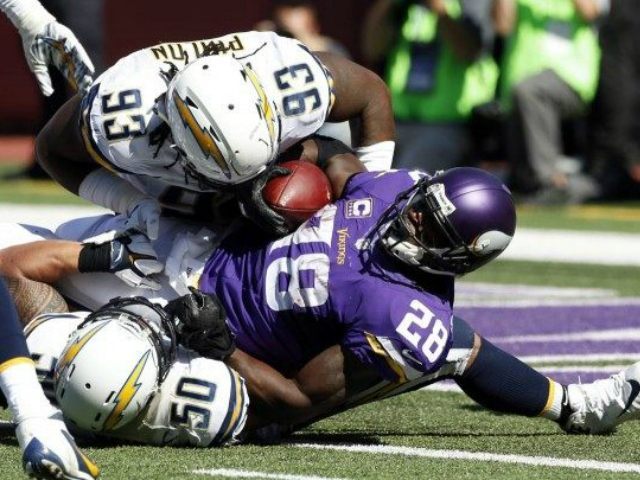In a Philadelphia court earlier this week, the NFL sought to continue to exclude families of plaintiffs diagnosed with chronic traumatic encephalopathy (CTE) after the settlement from receiving payments from the pool set up for retired players. In a Boston court last week, Joanna Leigh pleaded guilty to defrauding Boston Marathon Bombing charities of nearly $40,000 after claiming a non-existent brain injury from the 2013 blast.
A thread beyond brain injuries ties the two cases together.
“The majority of this patient’s severe cognitive, somatic, mood and sleep symptoms that have completely disrupted her life are due to her post-concussion syndrome,” Dr. Robert Cantu once wrote of Joanna Leigh, the woman convicted of fraud in Boston. “As a result of these symptoms Dr. Leigh is currently and for the foreseeable future disabled from the kind of complex consulting work she has done before the bomb blast injury was sustained.”
The same Dr. Robert Cantu who acted as a consultant to the plaintiffs suing the NFL in Philadelphia provided the defendant prosecuted in Boston “post-concussion syndrome” and post-traumatic stress disorder evaluations. Given that Cantu’s name appears atop all others on the staff of Boston University’s Center for the Study of Traumatic Encephalopathy, the primary group finding neurodegenerative disease in football players, the league’s reluctance to pay the families of athletes receiving future CTE diagnoses appears prudent.
Leigh suffered no injury from a bomb blast. She instead sought to benefit from the terrorist attack that killed three and injured hundreds. One in ten plaintiffs who joined the suit against the NFL never played a down in an official game. Other litigants include replacement players competing in the three games during 1987’s strike and kickers and punters who appeared in a handful of contests. Do some of them also seek to capitalize on well-publicized tragedies?
A federal judge hearing the dispute between the retired players and the leagues wondered as much this past week. “So now the settlement is going to be watered down by every field-goal kicker who is depressed,” Judge Thomas Hardiman said about potential specious claims from players exhibiting supposed symptoms of CTE.
“Research has shown that compensation and litigation factors are the single most stable predictor of prolonged post-concussive symptoms in concussion samples,” Rodney D. Vandenploeg, Heather D. Belanger, and Paul M. Kaufmann informed in Psychological Injury and Law. The University of Colorado School of Medicine’s Hal S. Wortzel, Lisa Brenner, and David B. Arciniegas write in Behavioral Sciences and the Law that “the potential for malingering is real when litigation is a factor, and various authors have reported significant base rates (up to 40%) of malingering in brain injury litigation.”
With Cantu’s rivals suggesting in the press the ability to test for CTE in the living (as they conceded in academic journals that autopsy remains the sole means of diagnosis), one needn’t possess Madam Cleo’s powers to foresee widespread medical claims from living players contending CTE to profit through the legal system. Already, several players report suffering from CTE despite scientists agreeing that a postmortem remains the only current way to diagnose it.
The legal skepticism that greeted Cantu’s evaluation of Joanna Leigh meshes with medical skepticism regarding his BU group’s CTE claims. When family members seeking compensation from the NFL sought doctors to test linebacker-murderer Jovan Belcher’s brain—rotting in the ground for a year and partially obliterated by a self-inflicted gunshot wound—for CTE, a neurologist at a leading medical school told Breitbart Sports: “If the brain is sent to Boston [Ed. note: It wasn’t], CTE will be identified regardless of what shape it is in.”
The 4th International Conference on Concussion in Sport, attended by Cantu and held in Zurich in November 2012, reported the findings of the world’s best in sports medicine that CTE has “an unknown incidence” among athletes and that “a cause and effect relationship has not yet been demonstrated between CTE and concussions or exposure to contact sports.” Three years later neither a longitudinal nor cross-sectional study exists upon which to make any broad claims regarding CTE.
Yet, Cantu’s BU group continues to make them. “I think it’s going to be a shockingly high percentage,” Cantu’s BU partner Dr. Ann McKee speculates about CTE in football players in the League of Denial documentary. “I’m really wondering where this stops. I’m really wondering on some level if every football player doesn’t have this.”
And if the doctors don’t find it, surely the lawyers will.

COMMENTS
Please let us know if you're having issues with commenting.